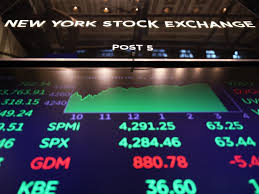U.S. household wealth reached a record high of more than $154 trillion in the second quarter thanks to a booming stock market and a rise in home prices, according to Federal Reserve figures released on Friday.
According to the Fed’s quarterly survey of the balance sheets of families, corporations, and federal, state, and local governments, household net worth increased 3.7% to $154.28 trillion between April and June from $148.79 trillion at the end of the first quarter.The data revealed that consumers had fully recovered from the wealth losses brought on by a crushing stock bear market and declining real estate values throughout much of last year as the Fed launched an aggressive drive to control inflation through significant, swift interest rate rises.
The second quarter saw the Standard & Poor’s 500 Total Return Index post its greatest increase since the final three months of 2021, returning 8.7% after reinvested dividends. Nearly half of the total increase in wealth during the quarter was attributable to the equity market’s surge, which increased household net worth by $2.6 trillion.Adding $2.5 trillion to the gain in net worth was real estate, which saw property values rise for the first time since the second quarter of 2022.
By about $1.8 trillion, or 1.2%, household wealth at the end of June eclipsed the previous record high of $152.49 trillion achieved in the first quarter of 2022.DOMESTIC CASH DOWN
The report revealed that household cash war chests, which are made up of various bank deposits and money market mutual fund holdings, continued to shrink, falling to $17.7 trillion for a record fifth consecutive quarter.That stockpile, which was a significant factor in consumer spending’s resiliency, was down by $66 billion from the end of March to the end of June and had decreased by more than $560 billion from its peak of almost $18.3 trillion at the end of the first quarter of 2022.
Banks, which have been sluggish to catch up with the Fed’s rate hikes by giving higher interest rates on checking and savings accounts and, until recently, certificates of deposit, have seen a continued shift in household saving habits. Money market fund balances increased by $137 billion to a record high of over $3.5 trillion, while bank deposits decreased by more than $200 billion to below $14.2 trillion.In the second quarter, debt levels for individuals, companies, and governments all continued to rise, albeit the rates of increase varied greatly by sector.
The total amount of non-financial debt climbed at the quickest rate since the first quarter of 2021, at an annualized 6.3%, to reach $71.2 trillion, with the government holding $31.3 trillion and families and businesses each owing about $20 trillion.The federal government debt increased by 12.7% on an annualized basis, which was the greatest increase since the record spike in the second quarter of 2020 that had supported the initial wave of pandemic relief spending. After the Biden administration and Congress reached an agreement to suspend the federal debt ceiling and prevent a government default late in the second quarter, the U.S. Treasury increased bond issuance.
While this was happening, the growth of business debt significantly slowed, rising in the second quarter at just a 1.9% annualized rate, which is the weakest rate of growth since the latter three months of 2020.

















